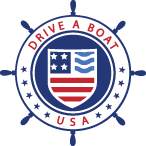How to Drive a Boat in Rough Water
A boat operator is enjoying a day on the water when all of a sudden the weather changes. What can they do?
Get ready to learn how to handle rough water!
Boating in rough water: stay safe!
When boating in rough water, there are several things you can do to stay safe:
Slow down and be cautious: Be prepared to stop quickly rather than resorting to sudden evasive maneuvers. Adjust your boat’s speed to prevent the bow from getting buried in waves.
Head to a safe location: If you encounter increasingly high seas, it’s best to head to a sheltered bay, cove, or breakwater. If the waves and water make it unsafe to continue, anchor your boat right away and use a marine distress signal to call for help.
Assign lookouts: If you have passengers on board, make sure they are wearing PFDs and position them at the bow and stern to act as lookouts while you maneuver to safety. Remember that in high wave conditions, other boats may not be easily visible.
Use navigational tools: Both you and your passengers should actively watch and listen for other boats and navigational aids using your eyes and ears. In addition, always use your own navigation lights and other navigation tools such as radar to broadcast your position to other boats in rough waters or reduced visibility.
A storm is approaching: get ready!
If you’re on the water and a storm is approaching, take these steps to keep you, your boat and your passengers safe:
- Make sure everyone on board is wearing a lifejacket that is the right size and fit.
- Close all hatches and ports to prevent swamping by big waves, and secure loose items.
- Keep passengers low and near the centerline for stability and safety.
- Pump out bilges to raise the boat in the water.
- Consult marine charts for the nearest shelter, noting any hazards, and slowly and cautiously head to the nearest safe shoreline, keeping a lookout for other boats and floating debris.
Navigating rough water during a storm
If the storm has already hit, follow these additional tips for everyone’s safety:
- If there is lightning, unplug all electrical equipment, stay low in the boat, and avoid touching metal objects.
- Position the boat’s bow at a 45-degree angle into the waves for stability. PWC operators should cross the wake at a 90-degree angle. Never attempt to jump waves.
- If the engine stops, drop an anchor from the bow to prevent drifting and swamping. Never anchor from the stern.
Avoiding boating in rough water: watch the weather
You can’t always accurately predict the weather, and conditions can change rapidly when out on the water. Always fill out a float plan before setting out, and be prepared for any eventuality by carrying visual distress signals and appropriate safety equipment like fire extinguishers on board at all times.
Stay vigilant by closely following weather forecasts and anticipating shifts in weather conditions.
- Watch the sky: Keep a constant eye out for fog, dark clouds, and lightning, which are clear indicators of approaching bad weather.
- Monitor barometric readings: Rising barometric pressure signals good weather, while falling barometric pressure suggests unfavorable conditions.
- Shifts in wind and temperature: Pay attention to these simple signs of changing weather.
- Westward Awareness: Be mindful of the West, as bad weather typically approaches from this direction.
- Monitor radio and weather channels: Stay alert for information about local weather patterns, especially when navigating unfamiliar waters. Tune in to a VHF-FM weather station. You can trust the National Oceanic and Atmospheric Administration (NOAA) for precise, detailed, and current weather information. NOAA Weather Radio is regularly updated and provides continuous weather broadcasts covering the coastal areas of the continental United States, Alaska, Hawaii, and the Mariana Islands. Never go boating during fog, wind or hurricane warnings.
- Observe other boaters: Take note of what other boaters are doing. If they are heading for shore, this may be a clue that weather changes are imminent.
Before venturing into new or unfamiliar waters, familiarize yourself with local hazards by acquiring local marine charts and asking local boaters and marinas for tips. In rough water, you are more likely to be vulnerable to other dangers, so you should get informed and be prepared to avoid them.
Learn to navigate safely with Drive a Boat USA
Did you know that you need a boating card to legally operate a vessel on over 70% of US waters? When you prepare for your online test by taking a boater safety course, you are not only ready to go boating anywhere in the States, you are also giving yourself a chance to learn about important safety procedures like how to navigate rough seas.
Our course includes interactive quizzes and instructional videos, all available online. Trust Drive a Boat USA to teach you what you need to know about boating across the States, including New York, California and Florida!

